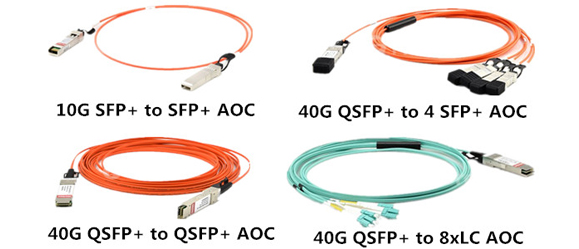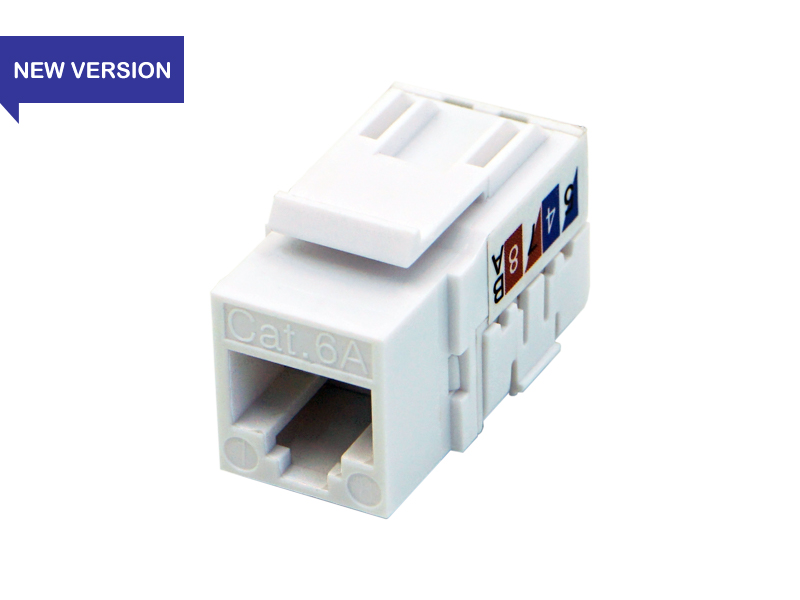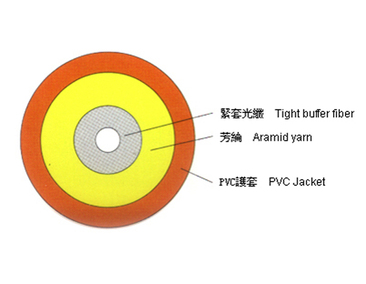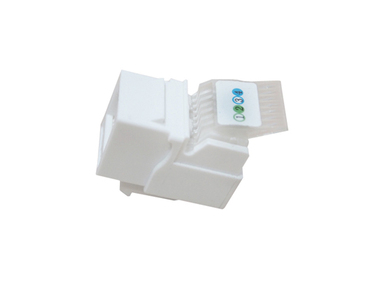
Bandwidth usage is soaring, driven by the proliferation of Internet-connected devices. At this time, an active optical cable (AOC cable) has emerged. Besides, the market for AOC cables keeps growing and has a broad prospect. What are the active optical cables? Why should we use it? In this article, some knowledge of active optical cables will be provided.
Active Optic Cable (AOC) is used for short-range multi-lane data communication and interconnect applications. Usually, the wire transmission of optical communication should belong to the passive part, but AOC is an exception. AOC consists of multimode fiber optic cable, fiber optic transceivers, control chips, and modules. It uses electrical-to-optical conversion on the cable ends to improve the speed and distance performance of the cable without sacrificing compatibility with standard electrical interfaces. Since people expect more information to be available at their fingertips, our communications systems will need to be quicker, and AOC is one of the best solutions to solve this problem. Compared with direct attach copper cable for data transmission, AOC provides more advantages, such as lighter weight, high performance, low power consumption, low interconnection loss, EMI immunity, and flexibility. At present, AOC is widely used in many fields as well as promoting the traditional data center to step into optical interconnection.
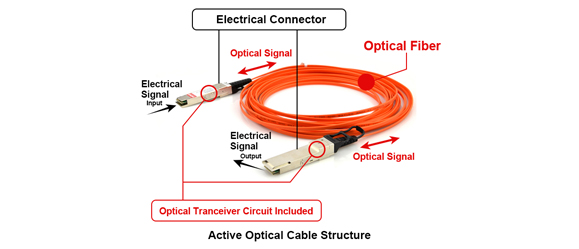
Passive cabling provides a direct electrical connection between corresponding cable ends. Active cables provide the same effect but, embedding optics and/or electronics within the connectors, can overcome some of the limitations of passive cables. While passive cables are always copper-based, active cables can use either copper wire or fiber optics to provide the link between the cable ends. The picture below shows us the leading types of passive and active cables for the data center.
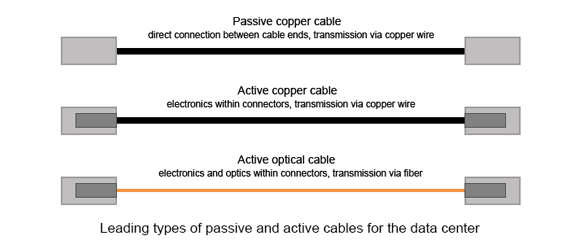
Primarily, active optical cable (AOC) assemblies were invented to replace copper technology in data centers and high-performance computing (HPC) applications. As we know, copper passive Twinax cable is heavy and bulky, making it difficult to physically manage the data center. And due to the nature of electrical signals, electromagnetic interference (EMI) limits copper’s performance and reliability. Though there are so many disadvantages of copper cable, at that time, it is the mainstream while the idea of AOC cables almost seems too good to be true. However, the advantages of AOC cables make the predecessors look obsolete and unsophisticated, and change the limitation of copper passive Twinax cable as well as playing an important role in high-speed data transmission. Nowadays, a variety of active optical cables has been launched in the market, such as 10G SFP+ AOCs, 40G QSFP+ to QSFP+AOCs 40G QSFP+ to 4 SFP+ breakouts AOCs and,40G QSFP+ to 8xLC breakout AOCs.
